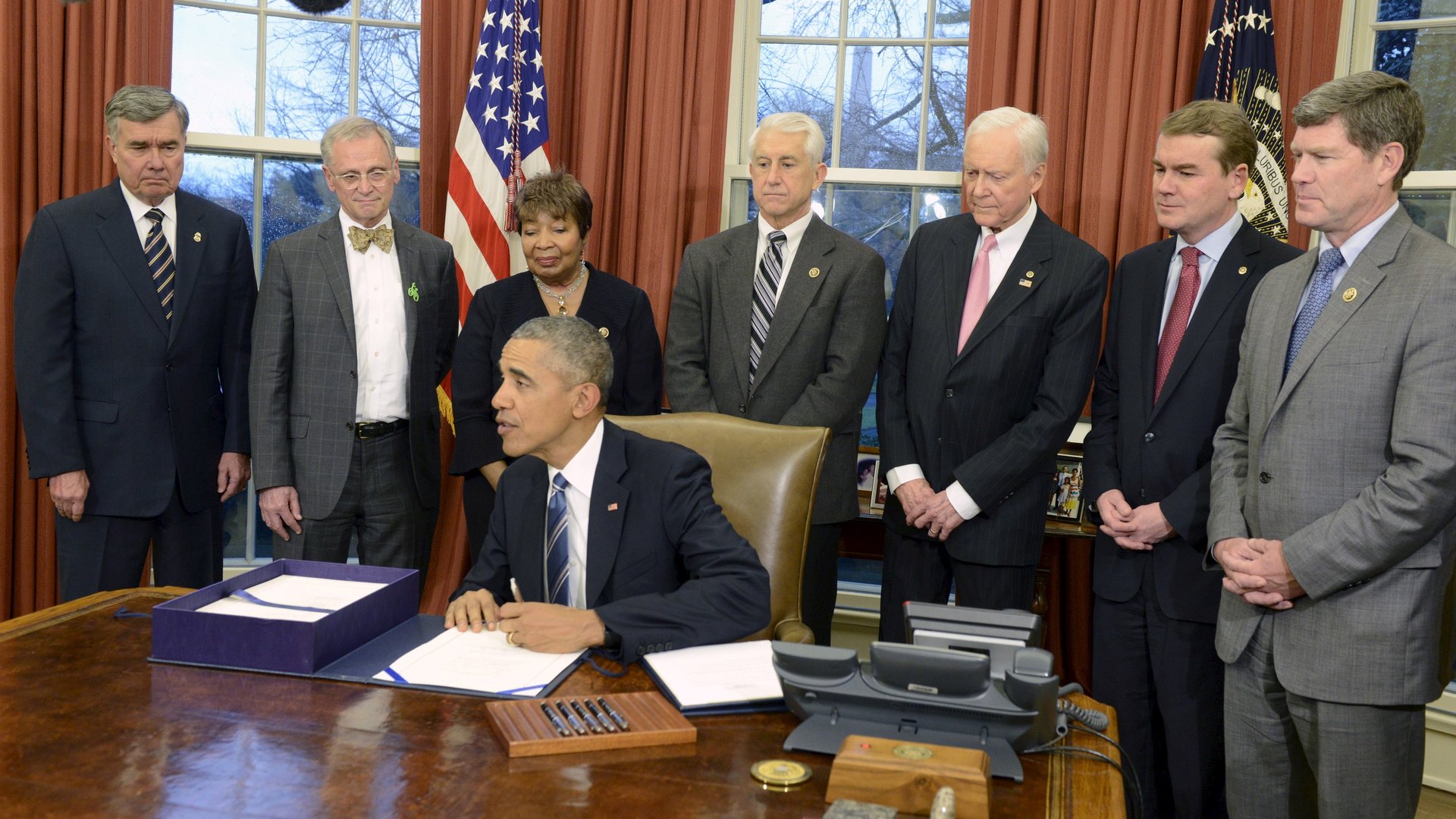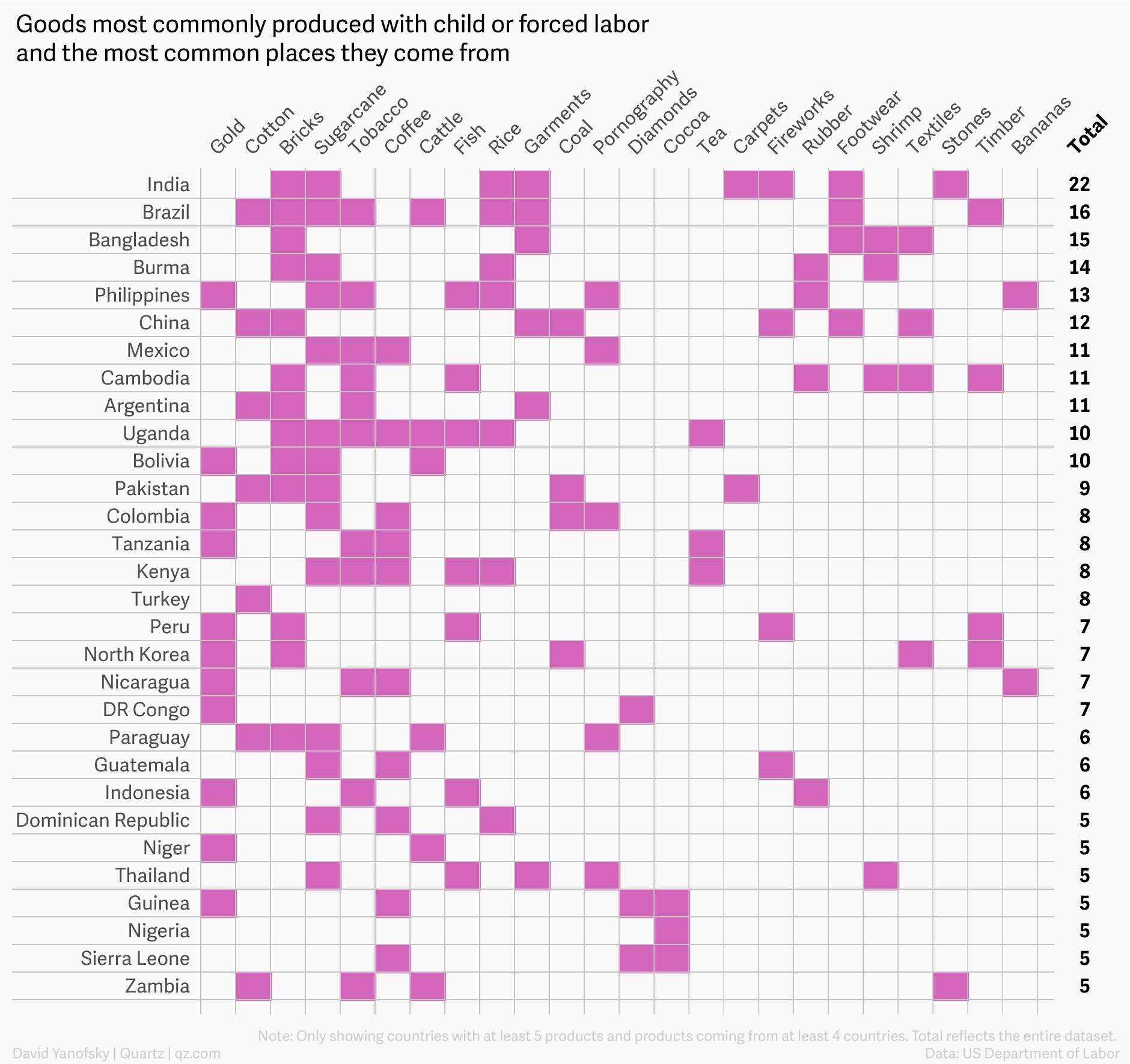The US has finally banned imported goods made by slaves and children
US president Barack Obama has signed into law a bill containing a provision that officially bans imports of goods made by forced labor.


US president Barack Obama has signed into law a bill containing a provision that officially bans imports of goods made by forced labor.
The wide-ranging bill, called The Trade Facilitation and Trade Enforcement Act of 2015, is primarily about creating conditions that help US workers and businesses. But it also closes a legal loophole that has long allowed the importing of goods made by forced labor if consumer demand couldn’t be satisfied otherwise. The so-called “consumptive demand” test dates back to 1930.
“It’s an outrage this loophole persisted for so long,” Oregon senator Ron Wyden told the AP earlier this month. “No product made by people held against their will, or by children, should ever be imported to the United States.”
Some 350 common products from countries around the world are made with forced and child labor, at least in some instances, according to a list maintained by the US Department of Labor. Coffee from Colombia and garments from Bangladesh are included, as is sugarcane from Brazil and shrimp from Thailand. (An AP investigation last year revealed that shrimp peeled by slaves in Thailand had made its way into US supermarkets and restaurants, including Wal-Mart, Whole Foods, Red Lobster, and Olive Garden.)
“The mere deterrent effect of closing this loophole is a great step forward,” Gil Kerlikowske, commissioner of US Customs and Border Protection, told reporters. “We’re going to make sure that is heavily noted throughout the world.”
But as the AP reported when Congress passed the bill on Feb. 12 (it was signed by the president on Feb. 24), some critics believe the new US provision is more about image than anything else. Indeed, it looks bad to have a loophole that allows for imports of products made by slave labor; but the new rules, which take effect in March, will only be meaningful if they’re enforced, which could require more resources.
Here are some of the goods on the Labor Department list that have been linked to forced or child labor:

Not all items in these categories are made with forced or child labor, and not all of them are imported to the US. But these products may come under increased scrutiny. The bill requires annual reports on the number of instances in which merchandise was denied entry to the US, along with a description of the merchandise.